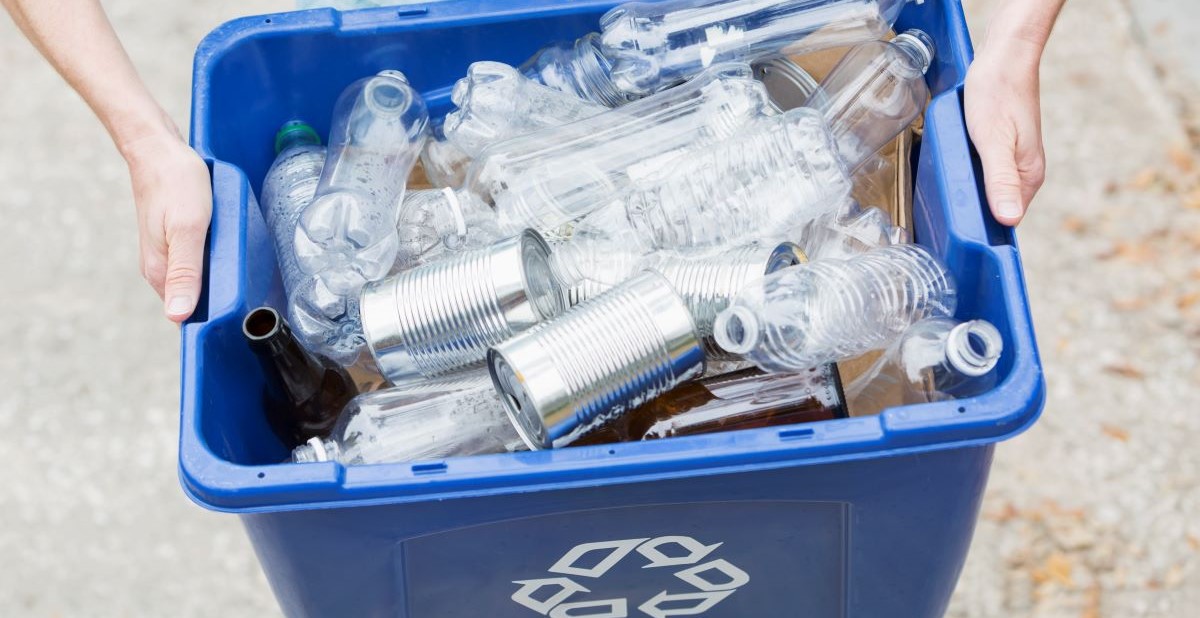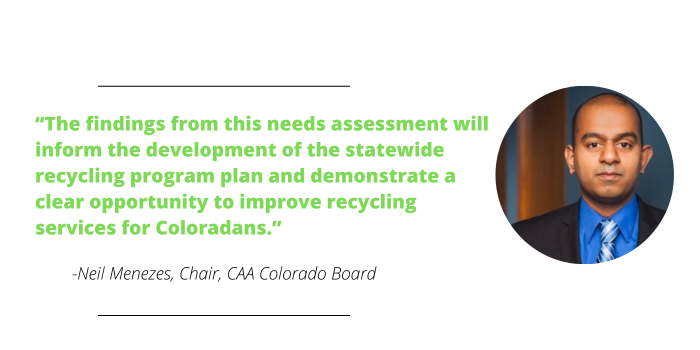Colorado’s Landmark Needs Assessment Signals EPR Progress

Colorado’s recently released needs assessment – the first of its kind in the United States – not only indicates plenty of room for improvement in the state’s recycling program, but also may serve as a bellwether for the rest of the country’s sustainability efforts.
The assessment is a pivotal step in the implementation of Colorado’s Producer Responsibility Program for Statewide Recycling Act, which was passed in 2022. The law focuses on extended producer responsibility (EPR), a growing policy approach that assigns producers and importers significant new responsibility for the treatment or disposal of products at the end of their life cycle.
- The law establishes a program requiring companies that sell packaging and paper products to fund a statewide recycling system to recycle those materials.
- These companies are to form an independent non-profit – called a producer responsibility organization (PRO) – to manage the program.
- Colorado’s Department of Public Health and the Environment (CDPHE) oversees the administration of the state’s PRO, including the creation of a statewide list of recyclable items.
“Starting an EPR policy in a responsible way typically entails conducting a needs assessment,” says Maurice Norris, MAS, public affairs manager at PPAI. “This also serves as a potential preview for stakeholders affected by the mandate.”
The Results
Colorado’s PRO, the Circular Action Alliance (CAA), partnered with independent third parties in evaluating the state’s current recycling services, which included 75 interviews and facility tours with recycling service providers, 150 municipal surveys, webinars, desktop research and conversations with other stakeholders, such as schools and environmental nonprofits.
- The Needs Assessment includes three future recycling service scenarios, which outline recycling and collection rates that Colorado can meet by 2030 and 2035, as well as the operating and capital costs to reach each scenario.
- Following a public comment period, CDPHE will select one scenario to recommend to the Joint Budget Committee of the Colorado Legislature for approval.
“We’re proud to deliver the country’s first producer-led needs assessment for packaging and paper products,” says Neil Menezes, chair of the CAA Colorado Board. “The findings from this needs assessment will inform the development of the statewide recycling program plan and demonstrate a clear opportunity to improve recycling services for Coloradans.”

While roughly 20% of Colorado households in rural areas currently have curbside recycling services, the state’s new statewide recycling program could more than double that to 55%, according to the needs assessment.
- Only 22%-28% of consumer packaging and paper products in Colorado are currently being recycled, but the state’s new program could increase that rate to 47%-60% by 2035.
Based on the requirement that recycling collection must be as convenient as trash collection in a jurisdiction, an estimated 500,000 new households in Colorado will receive curbside recycling services, according to the needs assessment. Furthermore, areas with the lowest income per capita will experience the largest increase in recycling access.
The new program will also create a “Minimum Recyclables List,” which will increase the recycling rate, reduce contamination at both recycling and composting facilities and support education efforts.
Plus, investments in materials recovery facilities are estimated to yield an additional 600,000 tons of additional capacity per year – a 60% increase in what the system can manage today, according to the needs assessment.
Circularity And Its Potential For Promo
The needs assessment also found that there’s an opportunity to expand the end markets in Colorado, particularly for glass, creating a closed loop system where materials are circulated in the economy and kept out of landfill.
During a webinar last week, Ben Grossman, founder of Sommerville, Massachusetts-based SwagCycle and co-president of Grossman Marketing Group, predicted that the promotional products industry will also move toward more circularity.
“Things won’t just be made, used and then thrown away,” Grossman said. “Instead, perhaps things can be made, used, possibly repaired, repurposed or upcycled in a way that’s good for the environment, as well as a company and its marketing initiatives.”
The importance of designing goods to be reused in their existing form or recycled into new products plays a big role in how we embrace circularity in promo, says Elizabeth Wimbush, director of sustainability and responsibility at PPAI.
“I'm excited to see this kind of forward-thinking take off, as we collectively educate our clients and ultimately end-users that this is not only an option, but something that will become mainstream,” Wimbush adds.
The Future Of EPR
Since 2021, when Maine and Oregon passed the first EPR legislation in the U.S., numerous states have followed suit, enacting laws addressing end-of-life concerns for consumer products and packaging.
For example, California’s Senate Bill 54, which passed in 2022, implements what could be the country’s most ambitious state-mandated paper and plastic recycling requirements. Under SB 54, plastic packaging in the state must be recyclable or compostable by 2032.
- California’s EPR legislation applies to just about any company that handles consumer or commercial goods, including manufacturers and direct sellers.
Some of the legislation’s requirements start earlier: There is a 30% threshold for plastic packaging in California to be recycled by January 1, 2028, with increases to 40% by 2030. California’s goal is for this policy to achieve a net reduction of plastic packaging waste by 25% within a decade.

Senate Bill 707, which would establish an EPR program for textiles under the regulatory authority of the California Department of Resources Recycling and Recovery (CalRecycle), is expected to be taken back up later this year.
“While PPAI is monitoring the progress of Colorado’s EPR implementation for packaging and paper products, we’re mindful that other states are considering similar requirements,” Norris says. “It’s important that the early states get this right for these efforts to be successful in reducing waste across a variety of product categories.”

